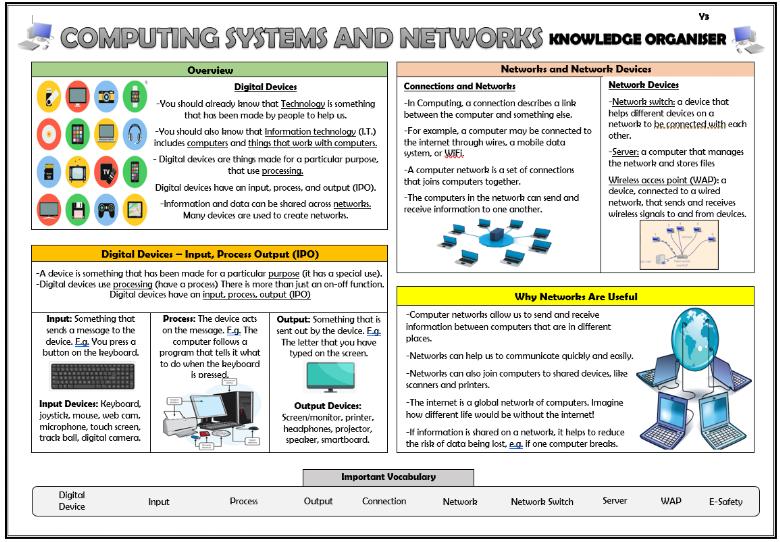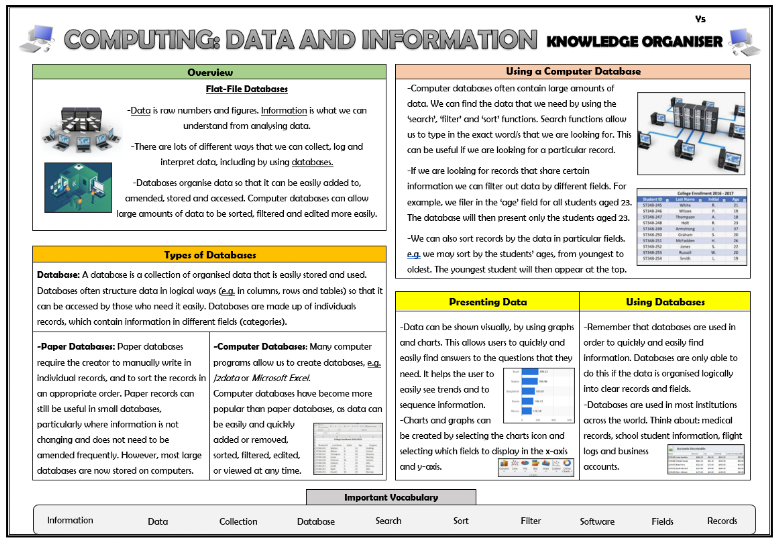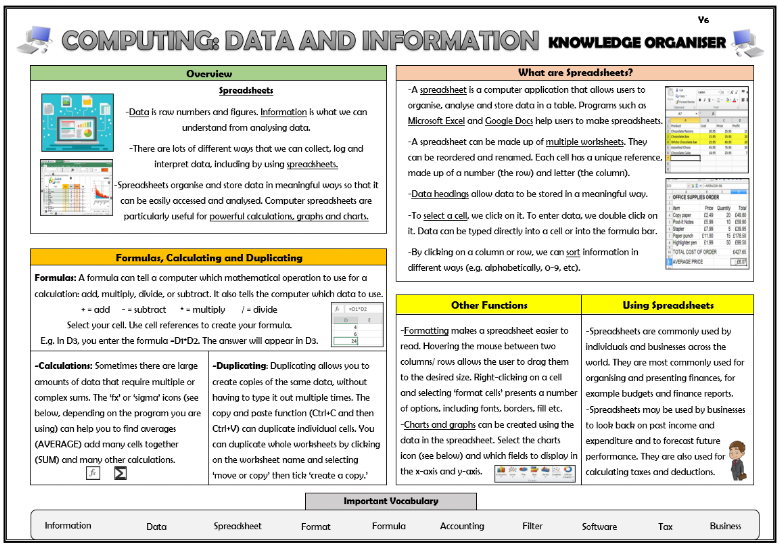Our learning for the Spring Term covers the 'Information Technology' element of our curriculum. Children learn about computing systems and networks in lower key stage 2 and, in Years 5 and 6, children learn about data and information.
Year 3
Connecting computers

Learners will develop their understanding of digital devices, with an initial focus on inputs, processes, and outputs. They will also compare digital and non-digital devices. Next, learners will be introduced to computer networks, including devices that make up a network’s infrastructure, such as wireless access points and switches. Finally, learners will discover the benefits of connecting devices in a network.
Year 4
Computing systems and networks - The internet

Learners will apply their knowledge and understanding of networks, to appreciate the internet as a network of networks which need to be kept secure. They will learn that the World Wide Web is part of the internet, and will be given opportunities to explore the World Wide Web for themselves in order to learn about who owns content and what they can access, add, and create. Finally, they will evaluate online content to decide how honest, accurate, or reliable it is, and understand the consequences of false information.
Year 5
Data and information - Flat-file databases

This unit looks at how a flat-file database can be used to organise data in records. Learners will use tools within a database to order and answer questions about data. They will create graphs and charts from their data to help solve problems. They will also use a real-life database to answer a question, and present their work to others.
Year 6
Data and information – Spreadsheets

This unit introduces the learners to spreadsheets. They will be supported in organising data into columns and rows to create their own data set. Learners will be taught the importance of formatting data to support calculations, while also being introduced to formulas and will begin to understand how they can be used to produce calculated data. Learners will be taught how to apply formulas that include a range of cells, and apply formulas to multiple cells by duplicating them. Learners will use spreadsheets to plan an event and answer questions. Finally, learners will create charts, and evaluate their results in comparison to questions asked.
